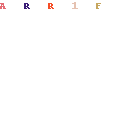
The top 5 things authors can do to ensure their source text is well-written
- Be concise – try not to use 30 words if you can say the same thing in 15.
- Keep it simple – even if you are writing about something very complicated or technical, always try to explain it as simply as possible.
- Write clearly – having a clear intention, thoughts and ideas makes it easier for a translator to convey your ideas, especially if they are somewhat abstract.
- Don’t use idioms or jokes (especially country-specific ones). Idioms are often hard to translate – as are jokes – and don’t always have a literal equivalent in another language, so try to avoid them if you know your text is going to be translated.
- Avoid synonyms – being consistent in the choice of words you use makes it far easier for the translator to know what you are trying to say and produce an unambiguous translation that faithfully represents your source text.
Don’t create a barrier to understanding with a sloppy source text
A real bugbear for many translators is being asked to translate a source text that has been poorly written. It is a constant cause of frustration in the profession and as a translation professor I know once wisely said, “To translate, first you have to understand”. A poorly-written original text is a barrier to understanding, which is why it makes the job of translating harder than it needs to be.
So, what makes a text poorly written? Well, there can be many reasons, here are a few common ones:
- Written by a non-native speaker
- Laziness on the part of the author
- Grammar errors, typos
- Clear thinking but poor writing skills
- Fuzzy thinking but good writing skills
Main problems facing translators presented with a poorly-written source text
A poorly-written source text creates several problems. If the thinking in the source text is unclear, the ambiguity can be transferred to the translation, causing issues for the target reader/audience. Another problem is that the source text can be misinterpreted by the translator, which results in a mistranslation and a quality complaint.
The translation process will also be more time-consuming for a translator trying to decipher the meaning of a source text. Finally, poorly-written source texts also often involve a long stream of emails as the translator will keep having to ask the client for clarifications.
Main problems facing languages service providers (LSPs) when presented with a poorly-written source text
A good translator will always examine a source text before accepting the job and is more likely to refuse a source text that has been badly written by the original author, which means less-experienced or talented translators will accept the job and deliver a translation of poorer quality. Read what one Turkish translator wrote about his frustrations on LinkedIn https://www.linkedin.com/pulse/impact-poorly-written-source-text-translation-yildirim-mcil-cl-miti/.
Some companies will ask non-native speakers who are experts in their field, science, for example, to write texts and then ask an LSP to find a translator to proofread them. This is a low-cost solution and never the best approach to achieving a good translation (see https://www.btb.termiumplus.gc.ca/tpv2guides/guides/favart/index-eng.html?lang=eng&lettr=indx_titls&page=95D0QuFqwMUE.html for a more in-depth analysis of what constitutes a poorly-written source text published by TERMIUM Plus®, the Government of Canada’s terminology and linguistic data bank).
Comparison of the translation process of poorly-written vs well-written source texts
| Poorly-written source texts | Well-written source texts |
| Low-quality translation | Good quality translation |
| Ambiguities transferred | Clarity of thought |
| Email trail seeking clarifications | Faster lead time |
| More time needed for editing | Less time required for editing |
| More costly overall | Less expensive |
So next time you need a translation, make sure that the source text is well-written for an optimal outcome.
